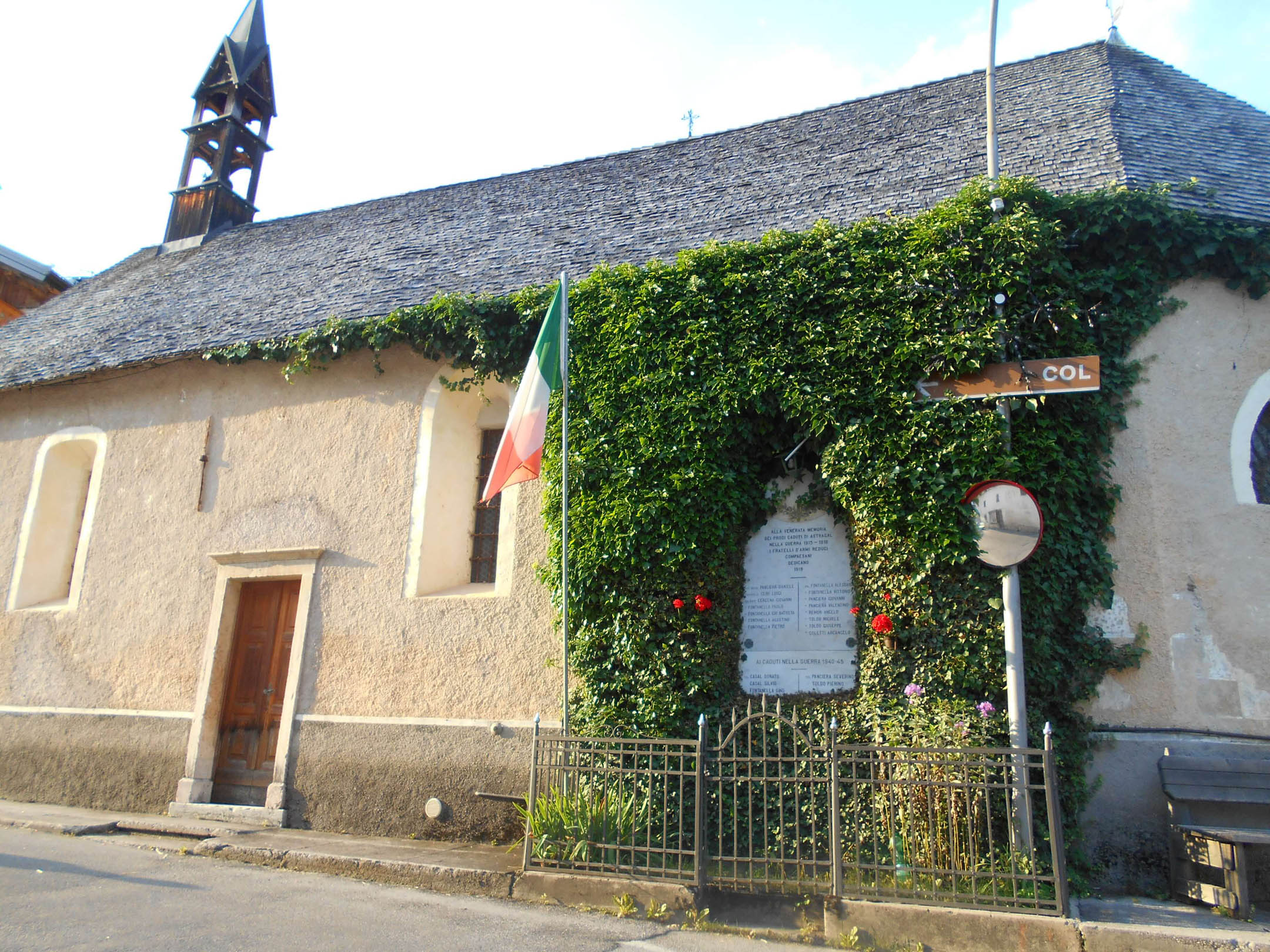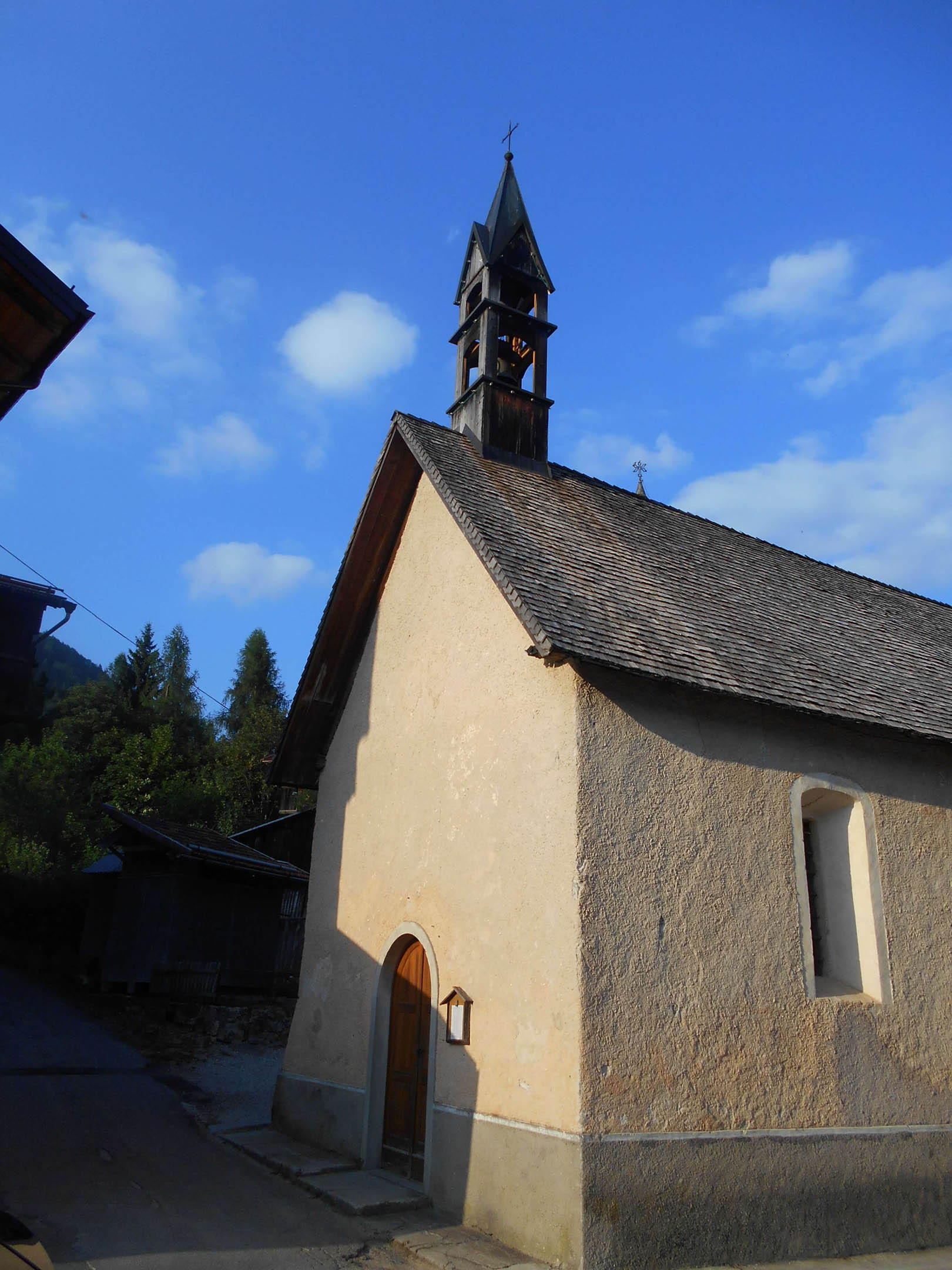Casa Besarel
 Dimore storiche
Dimore storiche
Descrizione
L’ANTICA DIMORA DEI BESAREL
I Panciera Besarel erano originari del villaggio di Astragàl, dove fondarono la propria dimora a partire dal 1700.Qui visse primo Valentino (1747 – 1811), riconosciuto per intaglio e scultura presso i conti di Collalto, nel castello di San Salvatore a Susegana.
Il nobile casato trevisano gli concesse lo stemma di famiglia, che fu dipinto sopra la porta d’ingresso della casa natale.
Nel disegno di Osvaldo Monti del 1881 la dimora risulta completamente rinnovata e rialzata di un piano.
ASTRAGAL - 969m s.l.m.
Antico paese sulle pendici meridionali del Monte Punta, probabilmente abitato in epoca medioevale da popolazioni provenienti dal Cadore attraverso i Passo Cibiana.
Ha dato i natali a Valentino Panciera Besarèl (1829), il più famoso degli artisti zoldani, qui c’è ancora la sua abitazione. La storia del Besarèl artista è uno degli innumerevoli esempi che legano la storia di Zoldo a Venezia.
GIOVANNI BATTISTA PANCIERA BESAREL (1801 – 1873)
Abile intagliatore, capace di un lavoro tenace e senza sosta, Giobatta ebbe anzitutto il merito di comprendere l’attitudine artistica del figlio Valentino, curandone la formazione.
Nella bottega artigianale di Astragàl progettò la ricostruzione della guglia del campanile di San Floriano alla Pieve di Zoldo, andata distrutta da un fulmine.
Così dimostrò notevoli abilità nel campo della carpenteria, tanto che gli furono commissionati il tetto della chiesa di san Francesco a Forno e il coperto del campanile di Fusine.
Negli anni 1844 – 1846 Giovanni Battista fu impegnato nell’esecuzione degli intagli ornamentali per il teatro di Innsbruck, progettato dall’architetto Giuseppe Segusini.
VALENTINO PANCIERA BESAREL (1829 – 1902)
Valentino si formò alla scuola del padre Giovanni Battista, che era solito portarlo con sé a Belluno ogniqualvolta riceveva una commissione.
Il giovane ebbe così modo di frequentare precocemente l’ambiente artistico bellunese; in città, dove alloggiava presso la casa del custode del Monte di Pietà, poté inoltre prendere lezioni di disegno e di lettere e conti.
Quando nel 1849 Giobatta fu incaricato della realizzazione di alcune opere per la chiesa di Agordo, Valentino seguì il padre che gli permise di esprimersi personalmente nell’esecuzione di numerosi intagli.
Grazie a quella occasione le sue attitudini furono apprezzate dal pittore De Min e dall’architetto Segusini, i quali lo introdussero all’Accademia delle Belle Arti di Venezia, che frequentò dal 1853 al 1855.
Le importanti commissioni ricevute dal 1855 lo indussero ad aprire un laboratorio a Belluno, fino al 1861. Successivamente avviò con i fratelli Francesco e Antonio uno stabilimento a Venezia.
La partecipazione all’Esposizione Universale di Parigi del 1867 rappresentò per lo scultore di Astragàl il trampolino di lancio a livello internazionale.
Nel periodo 1863/1870 Valentino ricevette numerose commissioni, indirizzate anche alla realizzazione di opere in marmo, che gli valsero importanti riconoscimenti.
Nel marzo del 1885 a causa di un banale incidente di laboratorio l’artista perse quattro dita della mano destra.
Ma “il Besarel non si accasciò alla sventura; durante la convalescenza, colla mano sana adattò un congegno a quella mutilata e continuò come prima il lavoro e intagliò nuove opere così fine, morbide, pastose che sono il trionfo della volontà dell’artista e del genio”.
Morì a Venezia nel 1902, lavorando instancabilmente fino alla fine.
THE ANCIENT DWELLING OF BESAREL
The Panciera Besarel family were from the village of Astragal, where they founded their own dwelling since 1700 .
In it the first Valentino (1747 - 1811) lived. He was really appreciated thanks to his carving and sculpture art works realized for Collalto earls, in the castle of San Salvatore in Susegana.
As a sign of protection and appreciation the noble family from Treviso granted him the family crest, painted on the front door of the birthplace.
In the drawing by Osvaldo Monti dating back to 1881, the dwelling appears completely renovated and raised by a second floor.
ASTRAGAL – 969 m above sea level
Old village on the southern slopes of Mount Punta, probably lived in medieval times by people coming from Cadore through Passo Cibiana.
It gave birth to Valentino Besarel Girdle ( 1829), the most famous artists of Zoldo, whose family house can be admired. In Venice, overlooking the Grand Canal his home. The story of artist Besarel is one of countless examples that ties the story of Zoldo to Venice.
GIOVANNI BATTISTA PANCIERA BESAREL (1801 – 1873)
Skilled carver, capable to work hard and tirelessly, Giobatta had primarily the merit of grasp the artistic attitude of his son Valentino, taking care of the his education.
In the handicraft workshop of Astragal he planned the reconstruction of the spire of the bell tower of the St. Florian Parish of Zoldo , destroyed by lightning.
On that occasion, he demonstrated to be a talented drawer and to have considerable skills in the field of carpentry; in fact he was later commissioned the roof of Saint Francis church in Forno and the roof of Fusine belfry.
Among other things he also realized several statues: the simulacrum of Saint Mary of Health) for the temple of Dont and four precious little angels decorating the high altar canopy in Saint Peter church of Belluno.
In the years 1844 - 1846 Giovanni Battista was involved in the execution of ornamental carvings for the theatre of Innsbruck, designed by architect Giuseppe Segusini.
VALENTINO PANCIERA BESAREL (1829 – 1902)
Valentino was formed at the school of his father Giovanni Battista, who used to take him to Belluno whenever he received a commission.
The young man was thus able to attend the early artistic environment of Belluno; in the city, where he was staying at the house of the Mount of Pity keeper, he could also take lessons in drawing, literature and mathematics.
When in 1849 Giobatta was commissioned to make several works for the church of Agordo, Valentino followed his father who allowed him to personally express his creativity carrying out numerous carvings.
Thanks to that circumstance his abilities were appreciated by the painter De Min and by architect Segusini architect, who introduced him to the Academy of Fine Arts in Venice, which he attended from 1853 to 1855.
The important commissions received from 1855 led him to open a laboratory in Belluno. Subsequently, with his brothers Francesco and Antonio, he started a factory in Venice.
The participation in the World Exposition in Paris in 1867 represented for the sculptor of Astragal the springboard to be appreciated at international level.
In the period 1863-1870 Valentino received numerous commissions, also for the creation of marble works for which obtained important awards.
In March of 1885, due to a banal laboratory accident, the artist lost four fingers of the right hand.
He died in Venice in 1902, working indefatigably until the end.


